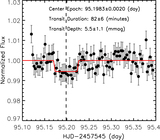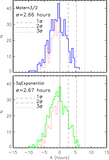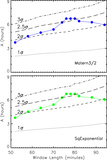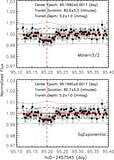Image Details
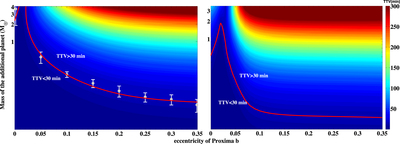
Caption: Figure 8.
Strengths of simulated TTVs of Proxima Centauri b varying with its eccentricity and the mass of the unseen outer planet, in coplanar near 2:1 and 3:2 MMR orbital configurations. The ranges of the eccentricity and the mass are contained by the RV observation of Anglada-Escudé et al. (2016). The upper limit of the unseen planet is 4.08 M⊕ and 3.60 M⊕ for near 2:1 and 3:2 MMR orbital configurations, respectively. In the left panel, the outer planet has an arbitrary orbital period of 22.58509 days, which is in near 2:1 MMR with Proxima Centauri b. In the simulations, the eccentricity of the outer planet is set to zero. The red solid curve represents the TTVs in strength of 30 minutes. The eight filled circles with error bars represent the arbitrary TTV models in the right panel of Figure 7. The right panel is for the coplanar near 3:2 MMR orbital configuration, where the orbital period of the outer planet is set to 16.89480 days arbitrarily.
Copyright and Terms & Conditions
© 2017. The American Astronomical Society. All rights reserved.



